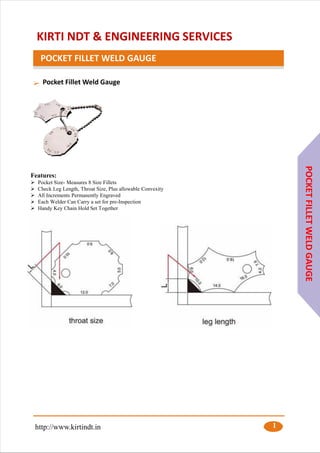Fillet Weld Design Approaches: Maximizing Joint Performance and Visual Appeal for Structural Honesty
In the realm of architectural engineering and fabrication, the importance of fillet weld layout approaches can not be overstated. By carefully taking into consideration elements such as weld account optimization, material choice, joint prep work techniques, welding process performance, and visual improvement designers, makers and methods can attain a harmonious equilibrium in between capability and look in their bonded frameworks.
Weld Profile Optimization


Attaining an optimum weld profile entails a precise consideration of aspects such as material thickness, joint configuration, welding placement, and desired welding rate. Additionally, the choice of appropriate welding parameters, such as voltage, current, and take a trip speed, is essential in regulating the shape and measurements of the fillet weld. Making use of advanced welding methods, such as pulse welding or robot welding, can better refine the weld account to satisfy particular layout demands and high quality standards.
Fundamentally, weld account optimization is a fundamental aspect of fillet weld design that directly influences the total efficiency and integrity of welded joints in architectural applications.
Product Selection Considerations
When thinking about product option for fillet weld style, the compatibility of the base steels is a crucial element affecting the structural stability of the joint. It is important to choose products that not only bonded together successfully however additionally possess comparable mechanical residential properties to guarantee the load is equally distributed between the weld and the base metals. Welding products with greatly different properties can cause concerns such as stress focus, early joint failure, or breaking.
Additionally, the atmosphere in which the welded structure will operate should be considered when picking products. Variables like deterioration resistance, temperature level changes, and direct exposure to chemicals can all influence the long life and performance of the weld joint. By choosing products that are ideal for the desired application and setting, the overall resilience and dependability of the welded joint can be see this page substantially boosted.
As a result, detailed factor to consider of product compatibility and ecological aspects is extremely important in making sure the weld joint's stamina, toughness, and total structural stability.

Joint Preparation Techniques
Thinking about the critical role material option plays in making certain the architectural integrity of fillet weld joints, it is crucial to apply precise joint preparation methods that optimize the connection between the base metals. Joint preparation is a crucial step that straight influences the high quality and stamina of the weld.
Additionally, proper fit-up of the joint is necessary to make certain uniform distribution of the welding material and prevent defects like incomplete penetration or too much build-up. Beveling the edges of the base metals can produce a groove that enables deeper weld infiltration and a stronger bond. Additionally, tack welding the parts in location prior to the final weld helps maintain positioning and lessens distortion throughout the welding procedure. By thoroughly adhering to these joint preparation techniques, welders can enhance the general efficiency and appearances of fillet weld joints while making sure architectural stability.
Welding Refine Efficiency
Reliable welding procedures are crucial for accomplishing optimum efficiency and quality in fillet weld construction. Processes like gas steel arc welding visit this site (GMAW) and flux-cored arc welding (FCAW) are generally used for fillet welds due to their flexibility and speed.
Regular calibration of welding machines, examination of consumables, and upkeep of welding lanterns can stop downtime and rework, ultimately saving time and sources. Well-trained welders are extra skilled at adjusting specifications, troubleshooting concerns, and maintaining constant weld top quality.
Aesthetic Improvement Approaches
To maximize the high quality of fillet weld fabrication, applying visual enhancement approaches can play an essential duty in making certain accuracy and accuracy throughout the welding process. Aesthetic aids such as weld size evaluates and magnifying lenses can aid in examining weld profiles and dimensions properly. By integrating these aesthetic enhancement techniques into the welding process, welders can achieve not only structurally sound fillet welds but likewise visually enticing results that satisfy market standards.

Final Thought
Finally, enhancing fillet weld design includes cautious factor to consider of weld profile, material choice, joint prep work, welding process efficiency, and visual enhancement methods. By applying these strategies, architectural honesty can be boosted while likewise attaining visual appeal. It is important to prioritize both performance and aesthetics in fillet weld style to guarantee the total quality and longevity of the joint.
By carefully thinking about factors such as weld profile optimization, product option, joint prep work strategies, welding procedure effectiveness, and visual enhancement techniques, engineers and fabricators can accomplish a harmonious balance in between capability and appearance in their welded frameworks.In the world of fillet weld style, enhancing the weld profile plays an more info here essential function in making sure structural integrity and efficiency. The weld account, which includes the size and shape of the weld cross-section, directly impacts the distribution of stress and anxiety and load-bearing ability within the joint. It is necessary to select materials that not just weld with each other successfully but additionally have similar mechanical homes to make sure the load is equally distributed in between the base and the weld metals - Gauge Fillet Weld.In final thought, maximizing fillet weld layout includes mindful factor to consider of weld profile, material option, joint preparation, welding process effectiveness, and aesthetic improvement methods
Comments on “Recognizing Gauge Fillet Weld: A Comprehensive Guide for Welders”